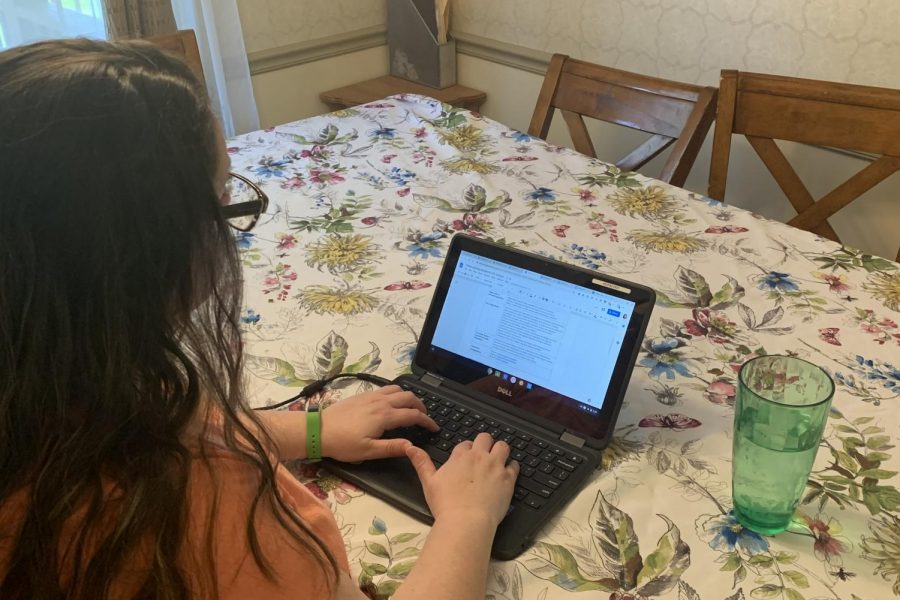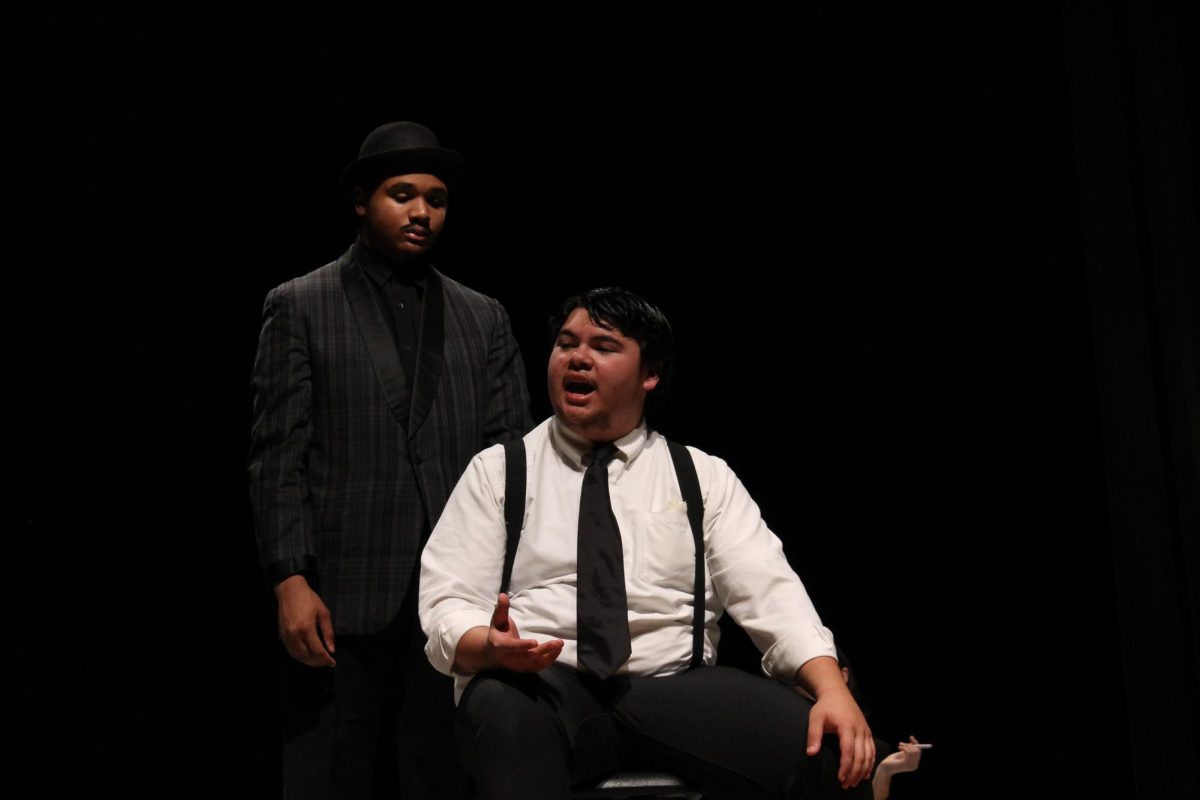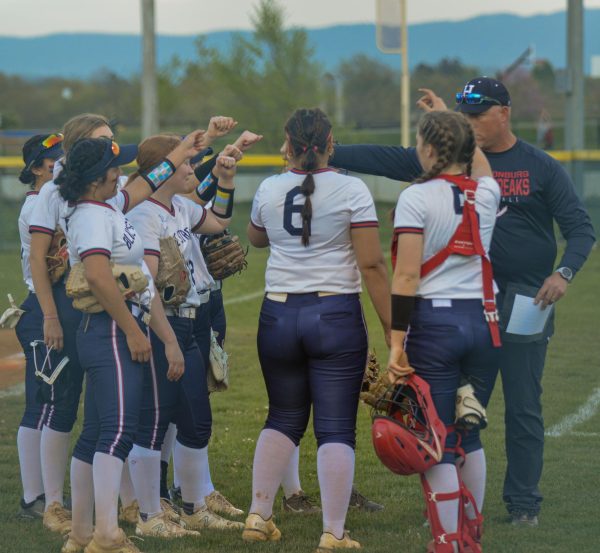Gingras transitions to teaching online
Photo Courtesy of Sara Gingras
English teacher Sara Gingras works on lesson planning for her classes.
April 14, 2020
After the cancellation of school for the remainder of the school year, teachers have had to adjust to online instruction. For English teacher Sara Gingras, this has been a relatively smooth transition due to the virtual nature of her class.
“To some extent, it hasn’t been a huge change for me because I mostly assign work through Google Classroom. My students are used to accessing their assignments this way, so the major change will be converting actual lessons into a digital platform,” Gingras said. “I’ve started playing around with it, and it seems like there are a number of reasonable options to make that happen.”
Many teachers rely on face-to-face time with their students to teach new content and help with assignments. However, Gingras has begun to find ways to get around the lack of communication with her distance learning program.
“The lessons will definitely be affected the most since they will mostly be presented as short videos without the interactive component. I won’t necessarily know immediately whether students want more examples or practice until they write me an email. I will continue to drop assignments through the classroom, and it’s going to have to be good enough until I can evolve further,” Gingras said.
In addition to helping students with online resources through the use of Google Classroom, Gingras and many other teachers have also started to accommodate students who do not have easy access to the internet at home.
“I was planning on photocopying packets of the major assignments for those without internet access. However, I was unable to get the packets together because one of my children developed a low fever and cough. I am positive it’s not COVID-19, but we were directed to not come in if anyone in the family was ill. I’m hoping for another opportunity to get these materials together,” Gingras said.
While COVID-19 has impacted school systems and education, Gingras has yet to think far into the future regarding her online learning plans and believes she needs to focus on what she can do for her students immediately.
“I think all I can do is wait to see how everything pans out and make myself available to my students,” Gingras said. “I am honestly worried that my students will not do their work that is assigned, but I also understand that it is out of my control.”
To attempt to make sure her students are completing all of their assignments, Gingras plans to have meetings with her students and stay connected through emails.
“I plan to check up through Hangouts and ask questions on Google Classroom. I’m holding [Google Hangouts] on Mondays, Wednesdays, and Fridays. I have also had many students email me as well,” Gingras said. “I want them to still feel like I’m a resource if they need me. I don’t know that I can enforce much in terms of work completion, but I do hope students will want to remain engaged.”
Transitioning to online learning is not only a learning opportunity for students, but also for teachers to take advantage of their resources.
“I’d say there’s no better time to learn. Even though I’m comfortable using online materials, there are so many new programs to try. Everyone can grow as professionals through this experience,” Gingras said.
For Gingras, the communication with her students and their ability to do work on their own brings her confidence that the assignments she gave students prior to the outbreak will be completed.
“I gave a huge project to 3 of my classes before the COVID-19 outbreak, so while I would be supplementing additional lessons if we were in school, I know that those classes have a decent amount of work to do. My Young Adult Fiction class reads books and discusses them. They are going to be reading, and we will do a Hangout to discuss. It’s pretty cool that we basically can go uninterrupted with the class,” Gingras said. “I am concerned about one of my English classes because I don’t believe that many of them will do the assignments without the motivation of grades and supportive coaching from myself. I will continue to try to meet digitally with those students and communicate through Classroom. Hopefully I will have a chance to get packets for them to do as well.”
Though this is a new experience for everyone in the education community, Gingras is attempting to do her part to stay positive and combat the hiatus in learning.
“[My advice is] try to still be learners. We are interrupted from our traditional instruction, but there are so many ways to still learn,” Gingras said. “Stop gaming or playing on your phone for 30 minutes and read something, and talk to another person about what you read. We are all in this together.”











